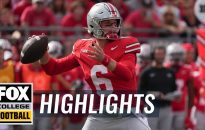(Aric Crabb/Bay Area News Group) A proposal from MTC suggests annual increases of 50 cents in bridge tolls starting in 2026, raising the cost of a car trip to $10.50 by 2030. Approximately $73 million of the toll funds from Bay Area bridges that voters sanctioned in 2018 for public transit and freeway enhancement projects […]


A proposal from MTC suggests annual increases of 50 cents in bridge tolls starting in 2026, raising the cost of a car trip to $10.50 by 2030.
Approximately $73 million of the toll funds from Bay Area bridges that voters sanctioned in 2018 for public transit and freeway enhancement projects has been redirected instead to support bridge maintenance.
This instance illustrates how the Metropolitan Transportation Commission officials have been blending various segments of tolls for the seven state-owned bridges in the region for several years.
These concerning financial management practices were revealed when the agency sought our editorial page endorsement for its initiative to once again increase tolls on Bay Area bridges.
The vehicle toll is expected to rise from $7 to $8 at the beginning of 2025. A committee responsible for bridge toll oversight will be voting next week, followed by the full commission board the week after on a proposal to impose an additional $2.50 charge.
Currently, due to the blending of funds, the commission does not have the data necessary to assess the toll increase comprehensively. The proposal should be put on hold until the agency’s financials are clearly articulated.
Latest toll increase proposal
The suggested plan entails annual increases of 50 cents starting in 2026, resulting in a car trip cost of $10.50 by 2030. To ascertain whether this increase is justified, I requested to review the financial tracking of the various segments of tolls that the agency currently collects.
District officials replied that they consolidate the funds instead of budgeting them separately. This is quite surprising and problematic, given that the different components of the toll serve very distinct purposes.
The initial dollar, approved by voters in 1988, was allocated for the operation, upkeep, and replacement of the bridges, alongside enhancements to BART, Caltrain, and San Francisco Muni.
An additional $3 — approved in $1 increments by the Legislature in 1997 and 2007 and by MTC in 2010 — was intended to help finance seismic retrofitting, including the replacement of the eastern span of the Bay Bridge.
Moreover, voters in 2004 and 2018 approved toll hikes totaling $4 to support the costs of transit service operations and freeway, transit, bicycle, and pedestrian initiatives, including BART’s seismic upgrades, new rail cars, and the extension to Warm Springs Station and San Jose; the Caldecott Tunnel fourth bore; and the eBART rail extension in eastern Contra Costa County.
The explanatory materials for the 2018 ballot measure, Regional Measure 3, included the projects but did not indicate that the funds would be allocated towards bridge maintenance or repair. Indeed, supporters highlighted that the measure would fund projects off the bridge to alleviate congestion on it.
However, it seems that voters should have scrutinized the fine print in the state legislation. Rebecca Long, the agency’s director of legislation and public affairs, and Derek Hansel, the chief financial officer, contend that the law permits them to utilize any of the toll revenues for any bridge maintenance, construction, and improvement initiatives.
Even worse, none of the toll components have expiration dates, yet the list of intended projects is limited. Thus, Long and Hansel argue that there will ultimately be more funds than projects, granting them the leeway to allocate surplus funds for any bridge-related purpose.
Indeed, they assert that they are allowed to employ funds from individual programs even before the promised projects are finalized. The commission’s only duty, they claim, is to eventually provide funding for the projects.
$10 billion debt
They also assert that toll revenue must be consolidated because it serves as collateral for bond sales. This is a flawed justification for the lack of transparency.
Pooling the figures for the bond market may be understandable, and it aligns with the practices of most governmental agencies. However, that does not excuse the failure to monitor how borrowed funds are utilized for different programs.
The commission is shouldering nearly $10 billion in bond debt. Not only does the agency neglect to track how the funds are allocated by program, but it also does not allocate the liability.
The consequence is that there is no means to determine what portion of the financial obligations for each program has been met, nor when it will be fulfilled.
As the commission contemplates further toll increases — again on a permanent basis — for bridge operations, upkeep, and rehabilitation, it must question how much of the current toll revenues could presently or in the future mitigate the necessity for such a significant increase.
However, to ascertain that, commissioners would require a financial breakdown and forecasts that distinguish funding and expenditures by each toll component.
Giving him credit, Hansel, who became CFO in 2022, states that it would be “good practice” to monitor revenues and expenditures for each program. He claims to possess the necessary information for Regional Measure 3. He has also indicated to others that he will need a couple of months to gather similar data for pre-existing programs.
Commissioners should demand that he expedite this process to enhance public transparency and guarantee that they make an informed choice regarding further toll increases.
The suggested increase is not set to commence until 2026, hence there is no immediate rush to expedite the proposal. Unless the tracking data becomes available, the hike in bridge tolls should be postponed.















The proposed toll increases for Bay Area bridges raise significant concerns about financial transparency and accountability. With the Metropolitan Transportation Commission redirecting funds initially intended for public transit and infrastructure projects to bridge maintenance, it’s crucial that they provide a clear breakdown of how toll revenues are